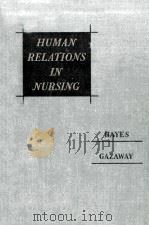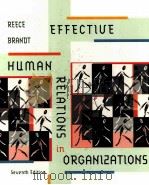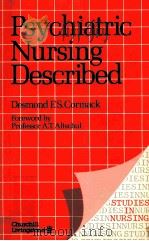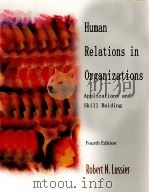《Human Relations in Nursing》
| 作者 | 编者 |
|---|---|
| 出版 | W.B.Saunders Company |
| 参考页数 | 471 |
| 出版时间 | 1955(求助前请核对) 目录预览 |
| ISBN号 | 无 — 求助条款 |
| PDF编号 | 812546618(仅供预览,未存储实际文件) |
| 求助格式 | 扫描PDF(若分多册发行,每次仅能受理1册) |

PART ONE.SOCIOLOGICAL ORIENTATION1
Chapter 1FOUNDATIONS FOR UNDERSTANDING SOCIETY3
Nursing School—"New World"of Experience3
Quest for Basic Understanding of Experience4
Behavior Influenced by Social Experience5
All Knowledge Is Relative5
Determining Facts of Illness6
Facts Interpreted by Reference to Systems of Analysis7
Continuous Expansion of Bases for Medical Interpretation8
More Understanding of Human Relations Needed8
Puzzling Nature of"Human Nature"10
The Case of"Understanding"Fatigue11
Nurses in Changing Social Situation13
Nursing Responsibilities Are Changing14
Goals and Functions of Nursing15
Educational Changes Demanded16
The Challenge of this Book17
For Investigation and Discussion19
Bibliography19
Chapter 2ANALYZING THE BASIC STRUCTURE OF SOCIETY20
Comparison with Dissection and Study of Human Anatomy20
Communication,"Correct"Forms20
All Parts Have Functions22
Culture,the Total Way of Life23
Tools for Detailed Study of Culture24
Trait,Complex,Pattern,and System24
Social Norms:Folkways,Mores,Laws25
Social Institutions28
Defects and Disorders May Develop in Changing Social Institutions29
Summary View of Social Structure30
How Culture and Society Are Related30
For Investigation and Discussion31
Bibliography31
Chapter 3SOCIAL LIFE OCCURS IN GROUPS32
Informal Group Formation32
Chief Characteristics of Human Groups33
Aggregations and Classifications Are Not Groups35
Classification of Social Groups35
Primary Groups36
Primary Group Experience May Be Limited or Absent39
Secondary Group Life May Become Dominant40
Bureaucracy42
Groups Related Vertically or Horizontally43
Stratification of Groups45
Mobility46
In-Groups and Out-Groups47
Ethnocentrism Produced Experimentally50
Ethnocentrism and Professional Groups52
For Investigation and Discussion52
Bibliography53
Chapter 4HUMAN NATURE AND PERSONALITY54
Why We Look into Mirrors54
Infants at Birth55
Original Helplessness Plus Flexibility56
"Not Born Human"57
Anticipation of Infant's Birth57
Socialization59
Idea of Self Develops59
Development of Self Words and Speech61
Development of Moral Responsibility63
Learning To"Play the Game of Life"64
Personal Organization65
Focus of Social Pressure on Person66
Determinants of Personality68
Significance of Social Isolation69
Examples of Cultivation and Guidance70
Personalities of Parents Influence Child72
Getting Acquainted with Personalities72
For Investigation and Discussion74
Bibliography75
Chapter 5SOCIETY IS CHANGING IN MANY WAYS76
"What's New?"76
People on the Move77
There Is a"Battle for Men's Minds"77
Perspective May Come from History78
Critical Periods Have Occurred in the Past79
Why Social Changes Occur80
Deviations May Get Acceptance80
Trial and Error80
Research and Invention82
Borrowing and Diffusion82
Limitations on Social Change83
The Culture Base83
Communication83
Intergroup Relations84
Resistance to Social Change84
Some Major Current Changes85
Technological Revolution86
Changes along Whole Cultural Front87
Social Changes and Social Stability89
Social Disorganization89
Social Problems90
Culture Lag90
Social Values91
For Investigation and Discussion92
Bibliography92
Chapter 6SOCIAL HEALTH AND SOCIAL PROBLEMS94
Social Defects and Disorders94
"Hospital World"as Model Society95
Physical Structure95
Diversification and Stratification95
Interdependence and Organization of All Parts97
Problems in"Hospital Society"97
Problems of Doctors98
Problems of Nurses99
Hospital,Part of Whole Society100
The Health of All the People101
Revolutionary Improvements101
Organization and Support of Health Services102
Some Highlights and Shadows in the Picture102
Physical Examinations of Inductees103
Leading Causes of Death104
Death Rate Due to Accidents105
Disability106
Mental Health107
Problems of Health and Our Way of Life109
"Total"and"Positive"Health110
The Price Required112
Quasi Health Problems112
Vice and Crime113
Alcohol and Social Problems113
Juvenile Delinquency116
For Investigation and Discussion118
Bibliography119
Chapter 7SOCIAL PROBLEMS(continued)120
State Pride120
"States'Rights"and Obligations121
The Problem of Intergroup Relations121
Religious,Racial,and Class Groups122
The Negro Is a Minority Group123
Under Slavery123
Humanitarian Developments and Legal Emancipation123
Advancement Despite Social Inertia124
Race and Group Consciousness124
Significant Changes125
The Problem Remains125
Impact of Prejudice on Self and Personality125
Biological Differences Are Social Symbols126
Japanese,Indians,Mexicans126
Marginal Persons127
Some Problems of Jewish-Gentile Groups128
Long History of Separation and Persecution128
High Status of Many Jews129
Stereotyped Image129
Some Cooperation and Friendship129
Most Serious Aspect of Problem130
Religious Conflict May Disorganize Society131
Fractional Strife in Communities131
Labor-Management Relations132
Emergence of Modern Economic Groups132
Labor Organization132
Important Facts and Issues133
Light May Be Dawning133
The Basic Problem of Social Intelligence134
Behavior Rests on Consent134
Children Must"Know the Game"Being Played134
The"Hospital World"Once More134
Complexity of Informed Public Opinion135
Some Underlying Difficulties136
Static Learning and Dynamic Living136
Fear of Inquiry and Understanding136
Propaganda137
Control through Advertising137
Propaganda Is Subtle137
Extreme Results in Germany138
Protection against Propaganda138
For Investigation and Discussion139
Bibliography140
Chapter 8FAMILY RELATIONSHIPS ARE CHANGING141
Variability among Families141
Similarities by Habitats and Classes141
Changing Bases of Family Structure142
The Traditional American Family144
Patriarchal in Form144
Primary Goals145
Agricultural Interest145
Functions of the Traditional Family146
Changes in Economic Relations and Functions147
Technological Revolution147
New Things Become Necessities148
Work Pattern of Family Changes148
Changes Associated with Reproductive Function149
Children—Economic Assets or Liabilities150
Emphasis on Individualism151
Happiness—By-Product or Goal151
Changes in Protection and Maintenance Functions152
Welfare,Health,and Educational Services152
Family as Consumption Unit153
Transmission of Property,Status,and Name153
Arts and Crafts Instruction Declines154
Creative and Recreative Activities155
Limited Function of Mass Amusements156
Determination of Vocation or Vocational Preference156
Chapter 9FAMILY RELATIONSHIPS(continued)158
Determination of Conceptions of Self and Personality158
Mastery of Language159
Children May Learn More Than Parents160
Training in Manners and Morals160
Child Training and Reactions to Illness161
Cross-Cultural Differences in Early Training161
Relative Length of Complete Dependence162
Family Continues as Chief Source of Early Training163
Community Shares More Training163
Guidance from"The Lonely Crowd"163
Provision of Affection and Security164
Essential Family Function164
Effects of Institutional Life on Personality165
Report of Case Study166
"Explanation"of Love168
Completeness of Self in Others168
Complementarity in Courtship and Marriage169
Possible Clue to Divorce170
Family System Becomes Unstable and Families Disorganized171
Summary of Changes in Family171
The Family System in Transition172
Significance of Complementarity Reviewed173
For Investigation and Discussion173
Bibliography174
Chapter 10WE ARE AT HOME IN COMMUNITIES175
Help from Community in Getting Job175
The Community Is a Social Group175
Experience in Community176
What We Know about Our Community176
Better Acquaintance with Communities177
What We Need To Know177
Geographical and Regional Location178
Reasons for Community Location179
Regional Connections among Communities179
Value of Historical Sketch179
Extent,Size,and Layout of Communities180
Legal and Sociological Boundaries180
Rapid Expansion Quite Disturbing181
Variability in Size of Communities181
Need for a Base Map182
Population182
Variation in Sex and Age Ratios183
Natural Areas183
In Smaller Places Such as Jonesville184
In Larger Cities184
Value of Area Analysis187
Class Structure187
In Jonesville187
Variations in Class Structure188
Economic Base and Division of Labor189
Competition and Cooperation190
Family Life191
Religious Organizations191
Some Points of Difference191
Systems of Control and Government192
Control Related to Freedom192
Making Community Decisions192
Why"Political Machines"193
One-Family Domination193
Power Structure194
If Informed People May Rule194
Communication195
The Local Newspaper195
Informal Communication196
Holding Together196
Habitual Patterns for Living196
Special Occasions and Interests196
Distinctive Character of Each Community197
Calls for Particular Study197
For Investigation and Discussion197
Bibliography198
Chapter 11COMMUNITY ORGANIZATION AND PROFESSIONAL SERVICES199
American Ideal of Progress199
Many Organizations for Improvement199
Efforts To Eliminate Undesirable Conditions200
Trial and Error Lead to Establishing Agencies200
Health Organization201
Historical Perspective Needed202
Antecedents of Medicine202
Recognition of Environmental Factors in Disease203
Discoveries Essential to Advent of Public Health203
Evolutionary View of Hospital Services204
Nursing Becomes Essential to Coherent Health Service205
Chief Reasons for Revolutionary Gains in Health205
Chronic Diseases Illustrate Future Challenges206
Welfare Organization207
Some Forerunners of Welfare Organization208
Case Work—New Rationale and Method209
Discoveries in St.Paul Indicate Major Need in Welfare Organizations209
Recreational Organization211
Recency of Many Recreational Demands211
Recreation Gives Rise to Problems of Regulation212
Recreation for All213
Communities Vary Widely in Recreational Organization214
Therapeutic Values of Recreation Uncertain214
Educational Organization214
Cabinet Post Combines Health,Education,and Welfare214
Educational Functions Widely Diffused215
Education Broader than Schooling215
Average Educational Level Rising216
Historically and Currently Schools Lack Integration216
Investigation and Experimentation Needed216
Toward Positive Community Organization217
Health Organization Points the Way217
Lag in Welfare Organization217
Public Support and Participation Crucial218
Economy and Efficiency Required219
Two Types of Competence for Professional Service Personnel219
For Investigation and Discussion220
Bibliography220
PART TWO.SOCIOLOGY APPLIED TO NURSING INTRODUCTION TO PART TWO224
Chapter 12CHANGING ORGANIZATION AND FUNCTION OF HEALTH SERVICES225
Emergence of Present-Day Health Services from a Disorganized Pattern of Care for the Sick225
The Family Primarily Self-Sufficient in Most Illness Situations226
Changes in Medical Care and Medical Practice226
The Family Doctor226
Contrasts in Cost of Medical Services227
The Advent of the Specialist227
Specialization in Medical Practice227
Access to Clinics and Hospitals228
Early Hospitals228
Attitude toward Hospitalization229
Personnel Involved in Care of the Patient229
Modern Hospitals229
Changing Role of the Hospital229
Changes in Hospital Environment229
Length of Hospital Stay230
Change in Attitude about Hospitalization230
Increasing Complexity of Relationships of Hospital Personnel230
Team Concept of Care231
Hospital Facilities More Readily Available to All231
Health Services and the Consumer231
The Consumer231
Demand for Adequate Health Services232
Public Relations232
Broadening Concept of Health233
Nurses'Training Gives Way to Education for Nursing233
Nursing Education234
Nursing Service235
Change in Concept of Nursing235
Status and Role of the Nurse236
Variations in the Community239
Variations in the Work Environment241
Summary245
For Investigation and Discussion246
Bibliography247
Chapter 13STRUCTURE OF NURSING SITUATIONS248
Basic Understandings248
Physical Aspects248
Social Institutions in the Community248
Population Characteristics249
Differences in Urban and Rural Communities249
Religion250
Family Size250
Income,Occupation,and Economic Status251
Housing252
Marriage Establishes the Family254
Health Requirements for Marriage254
Common-Law Marriage254
Family Life255
Establishing a Home255
Class Differentiation in Families256
Class Structure256
Family Disintegration256
Annulment257
Desertion257
Divorce257
Separation257
Family Relationships259
Democracy in the Family259
Autocracy in the Family259
Effects on Planning259
Other Assets of the Family Group260
Educational Attainment260
Intelligence260
Skill of the Homemaker261
Health Information261
Health Status261
Summary262
For Investigation and Discussion263
Bibliography264
Chapter 14NURSING SITUATIONS RELATING TO MATERNAL AND NEWBORN HEALTH266
Cycle of Nurse's Contacts during This Period266
Family Relationships267
The Woman Who Is To Become a Mother268
Family Customs270
Family Attitudes270
Relationships271
Fears of Pregnancy271
Admission to the Maternity Ward273
Maternal and Newborn Mortality273
Postnatal Period275
Rooming-In277
The Newborn277
The Midwife278
The Incomplete Family279
The Unmarried Mother279
Community Resources282
Specialized Institutions That Aid Families in the Maternal and Newborn Period282
National Institutions282
Children's Bureau282
Aid to Dependent Children of Social Security Act283
State Institutions283
Division of Child Hygiene,State Department of Health283
Local Institutions284
County Health Department284
Hospitals284
Maternity Homes284
Homemaker Service285
Temporary Home Placement in Foster Homes or Boarding Homes285
Planned Parenthood286
Summary287
For Investigation and Discussion288
Bibliography288
Chapter 15NURSING SITUATIONS IN THE INFANT PERIOD OF LIFE290
The Infant290
Early Contacts290
A Look at the Picture291
The Place of the Infant in the Population291
Mortality and Morbidity in the First Year of Life291
The Infant and His Family291
Family Structure292
Husband-Father and Wife-Mother in Their New Roles294
Housing294
Family Economic Resources294
Cultural Heritage Influences Parents295
Orientation of Infant's Basic Sense of Emotional Security and Dependence295
Attitude of Parents296
Communication Early in Infancy296
The Infant Begins Social Interaction296
Control as Part of Interactive Process297
Improved Care as a Result of Teaching297
Culture and Satisfaction of Infant Needs298
Impact of Culture298
Individualization298
Feeding Practices299
Preventive Health Practices for the Infant299
The Nurse and the Normal Infant300
The Infant Becomes a Human Individual301
From Biological Organism to Human Being301
The Rise of the Self301
Hospitalization of the Infant and Young Child301
Admission Data and Uses302
The Infant with Congenital Anomalies303
Parents and the Premature305
The Role of Government in Infant Care306
Community Resources Offering Specialized Services307
Summary307
For Investigation and Discussion308
Bibliography309
Chapter 16NURSING SITUATIONS IN THE PRESCHOOL PERIOD310
Life Begins To Have Real Meaning310
Social World Enlarges311
Play Groups311
The Neighborhood312
Development of Communication Skills Gives Impetus to Social Interaction312
The Self Becomes a Reality313
Emergence of a Person-ality314
The Child Becomes a Personality314
Parents Guide Personality Development314
Structuring Environment for Optimum Growth and Development314
Setting Limits for Behavior Maturation314
Significance of Kinship Group315
Sibling Group316
Preparation of an Older Brother or Sister316
The Child and Religious Influence318
Bridging the Gap between Home and School319
Day Care Centers319
Continuing Preventive Health Practices320
A Step-Mother or Step-Father321
Foster Homes322
Adoption322
Summary323
For Investigation and Discussion324
Bibliography324
Chapter 17NURSING SITUATIONS IN THE EARLY SCHOOL YEARS326
The Niche of the Six-Twelve Year Age Group in Socioeconomic Strata of Society327
Compendium of Physical Growth,Mental Development,and Acquired Skills327
The Family328
Recognition and Acceptance of Differences in Children329
Responsibilities in an Enlarged Social World329
Respect for Property Rights329
Manners329
Money330
Communication330
Personality Development Continues330
The School Has an Important Role To Play331
Group Adjustment in School Environment332
Group Interaction Becomes More Diversified332
Folkways Continue as a Means of Social Control333
Mores334
The Seed of Prejudice Is Sown334
Meeting the Child's Needs for Sex Information335
Health Needs336
Remedial Defects336
Hospitalization for the Older Child337
Community Resources338
Summary338
For Investigation and Discussion339
Bibliography340
Chapter 18NURSING SITUATIONS IN THE TEENS341
What Is the Child Like in His Teens?341
What Are Some of the Needs of the"Normal"Adolescent?342
The Adolescent and His Family342
Intra-family Relationships343
Inter-family Relationships343
Groups and Their Influence344
Gangs Come into Being344
Cliques344
Youth Organizations345
Student Nurse Organizations345
Minority Groups345
School and the Teen-Ager346
Sex Development347
Dating and Courtship347
Dating348
Courtship348
Preparing Young People To Be Parents348
Marriage Counseling349
Social Hygiene Association349
Prejudice349
Attitudes toward Health350
Safety350
Becoming Aware of Public Opinion350
Child Labor Laws351
Part-Time Employment351
Delinquency351
Choosing a Career353
The Teen-Ager Becomes Aware of Factors That Limit Social Mobility354
Culture and the Teen-Ager354
Summary355
For Investigation and Discussion356
Bibliography357
Chapter 19NURSING SITUATIONS AND THE YOUNG ADULT358
Population Changes and Satisfaction of Needs358
Society's Benefits359
Personal Satisfaction from Life360
Position in the Social Structure360
Personality361
Years of School Completed361
College Education362
Employment362
Career364
Healthful Living364
Marriage364
Inception of Family365
Cultural Conflicts in Marriage and Family Life366
Age and Status in the Community367
Manifestations of Personal Disorganization367
Social Illnesses367
Drug Addiction368
Alcoholism369
Prostitution370
Suicide370
Summary371
For Investigation and Discussion372
Bibliography373
Chapter 20NURSING SITUATIONS IN THE MIDDLE YEARS375
The Pattern of Family Life Changes375
Basic Needs in Middle Life376
Health Remains a Need377
Physical and Mental Changes378
The Nature of the Social World in Middle Years379
Employment379
Summary380
For Investigation and Discussion381
Bibliography381
Chapter 21NURSING SITUATIONS IN THE LATE YEARS OF LIFE382
The Nurse and the Aged382
America Is Fast Becoming a Society of Older People382
Life Expectancy Is Increasing383
People Spend Longer Years in Retirement384
When Is a Person Old?385
Basic Needs Have Not Changed385
Philosophy for Living386
Personality387
Spiritual Values387
Education387
Social Activity388
Status of Older Persons388
Recreation389
Marital Status389
Family Status389
Housing and the Aged390
Health in Old Age390
Accidents and the Older Worker391
Economic Status391
Employment in Later Years394
Retirement395
Social Insurance Programs395
Role and Function of Social Security Programs396
Indigency in the Aged396
Custodial Care for Senile Persons397
The Role of the Community398
Summary398
For Investigation and Discussion399
Bibliography400
Chapter 22NURSING SITUATIONS IN ACUTE ILLNESS401
Application of Sociological Concepts Can Strengthen Comprehensive Nursing401
Continuity of Care403
Contrasting Physical Environments in Home and Hospital404
Hospital Admission405
Contrasting Social Environments in Health and Illness406
Acute Illness Threatens Family Security408
The Nurse-Patient Relationship in Acute Illness409
Health Education as the Most Effective Tool for Avoiding Illness410
Socio-economic Status and Incidence of Disease411
Resources Which May Be Utilized To Cover Cost of Illness411
Workmen's Compensation412
Prepayment Plans412
Other Sources412
Summary413
For Investigation and Discussion414
Bibliography415
Chapter 23NURSING SITUATIONS IN LONG-TERM ILLNESS416
Identification of the Major Disabling Diseases416
Magnitude of the Problem of Chronicity417
Age Selectivity417
Prevention419
Length of Disability Period420
Personality420
Housing Facilities421
Influence on Family Living422
Social Implications of Long-Term Illness423
Economic Losses423
Long-Term Hospitalization424
Hospitalization for the Child with Long-Term Illness425
Medically Indigent426
Contrasts between Acute and Long-Term Illness427
Chronic Diseases Which Result in Non-Disabling Conditions427
Sex Differences in Disability428
Mental Illness428
Mental Illness as a Problem429
Increasing Need for Institutional Facilities429
Environmental Factors in Mental Illness430
Family Strengths and Weaknesses430
The Nurse and Mental Illness431
Social Consequences of Deformities432
The Role of the Social Case Worker433
The Role of The Practical Nurse433
Rehabilitation434
Occupational Therapy as One of the Components of Rehabilitation435
Physical Therapy436
The Community436
Summary437
For Investigation and Discussion438
Bibliography439
Chapter 24IN THE PROCESS OF TIME441
The Framework within Which the Nurse Will Function441
Responsibilities of Leaders in Nursing443
Change443
Democracy443
Team Relationships and Group Action444
Communication445
Working with People445
Understanding Others446
Responsibility to Students446
Evidence of Progress447
Vital Attributes for the Nurse449
Problems452
For Investigation and Discussion454
Bibliography455
INDEX457
1955《Human Relations in Nursing》由于是年代较久的资料都绝版了,几乎不可能购买到实物。如果大家为了学习确实需要,可向博主求助其电子版PDF文件(由 1955 W.B.Saunders Company 出版的版本) 。对合法合规的求助,我会当即受理并将下载地址发送给你。
高度相关资料
-

- Readings in human relations
- 1959 McGraw-Hill
-

- Human relations in administration : with readings and cases
- 1960 Prentice-Hall
-

- Harvard Business Review on Human Relations
- 1979 Harper & Row
-

- EFFECTIVE HUMAN RELATIONS SEVENTH EDITION
- 1999 HOUGHTON MIFFLIN COMPANY
-

- HUMAN RELATIONS IN EDUCATION
- 1988 ROUTLEDGE
-

- INSTITUTE OF HUMAN RELATIONS YALE UNIVERSITY
- 1943 THE INSTITUTE OF HUMAN RELATIONS
-

- Psychiatric Nursing Described (Studies in Nursing)
- 1983 Churchill Livingstone
-

- Social relations and human attributes
- 1982 Tavistock Publications
提示:百度云已更名为百度网盘(百度盘),天翼云盘、微盘下载地址……暂未提供。➥ PDF文字可复制化或转WORD






